
Royal Australian Historical Society (RAHS)
in association with WEA Sydney
Workshop: Tips and Techniques for Dating Historic Photographs
25 August 2021 11:00 AM – 1PM
Presenter:
Mr Gionni Di Gravio, OAM
Archivist, Special Collections, Auchmuty Library
University of Newcastle (Australia)
DOWNLOAD
Handout – Tips and Techniques for Dating Historic Photographs-GDG
Introduction and Acknowledgement of Country – Awabakal People of Newcastle (Mulubinba)
Case Studies from the Photographic Archives of Special Collections, Auchmuty Library, University of Newcastle (Australia)
The Ralph Snowball Glass Negatives
Resources:
Windows to Another Time
https://uoncc.wordpress.com/2009/05/19/windows-to-another-time-ralph-snowballs-glass-negatives/ ;
The Snowball Glass Negatives on Flickr:
https://www.flickr.com/photos/uon/sets/72157608912691810/ ;
Ralph Snowball on Living Histories
https://livinghistories.newcastle.edu.au/nodes/view/37985
2nd B.A.N.Z.A.R.E. Mission to Antarctica Photographs by “Self”
Resources:
2nd BANZARE Voyage to Antarctica
https://uoncc.wordpress.com/2007/07/04/2nd-banzare-voyage-to-antarctica/
The BANZARE set on Flickr:
https://www.flickr.com/photos/uon/albums/72157600614667459/
Living Histories:
https://livinghistories.newcastle.edu.au/nodes/view/92
The Thomas James Rodoni Archive
Resources:
Initial Arrival:
https://uoncc.wordpress.com/2014/08/18/local-treasures-the-rodoni-glass-negatives/
Exhibition:
https://uoncc.wordpress.com/2015/04/02/rodoni-archive/
Rodoni Archive on Flickr
https://www.flickr.com/photos/uon/albums/72157600614667459/
Rodoni Archive on Living Histories:
https://livinghistories.newcastle.edu.au/nodes/view/40
Side Story Dr Richard Thurnwall:
https://uoncc.wordpress.com/2016/08/17/thurnwald-rodoni/
Josiah Cocking Glass Negatives
Resources:
The Diaries:
https://libguides.newcastle.edu.au/digitalscriptorium/jcocking
The Josiah Cocking Photographic Archive on Flickr:
https://www.flickr.com/photos/uon/albums/72157664659398107/
Josiah Cocking on Living Histories:
https://livinghistories.newcastle.edu.au/nodes/view/70040
Miss Hayes and the Great Northern Hotel Carte de Visites
Miss Hayes on Hunter Living Histories:
https://hunterlivinghistories.com/2019/04/08/miss-hayes/
The Tips and Techniques – Identifying Clues
- Original Format
- Provenance & Context
- Subject(s)
- Community Hive Mind
ORIGINAL FORMAT: What is the nature of the original physical object? Is it metal, glass, leather, paper, cardboard, film? What is its condition? What processes created the object?
HISTORY OF PHOTOGRAPHY
- Terms and Definitions
- Early antecedents; Camera Obscura, Camera Lucida, Photogenic Drawing
- First photograph 1826/1827
PHOTOGRAPHIC PROCESSES
Direct Positive Photography (1829 – c.1930s)
– Daguerreotypes
– Calotypes
– Stereoscopic
– Ambrotypes
– Ferrotypes
– Other 150 processes
Wet Collodion to Glass Negative to Print (1839/1851 – 1930s)
– Wet collodion process
– Glass negatives
– Printed photographs
– Carte de visites
– Cabinet cards
– Photographs printed on postcard stock
– Online Resources
Roll Print Film (1885-Present)
– 1885 George Eastman invents Kodak Film
– 1888 Kodak camera (first handheld camera, “You press the button, we do the rest”)
– 1900 Kodak’s Box Brownie (snapshot)
– 1908 Nitrate to Safety Film
– 1948 First Polaroid Camera (Instant Photography)
– 1949 First single reflex camera (SLR)
– 1970s – Instamatic Cameras
– Examples of outputs
Digital Photography (1975-Present)
– 1957 First digital image from a scan
– 1975 First digital camera invented by Steven Sasson (Kodak)
– 1999 First camera phone released
– 2004 Kodak enters digital market
– 2007 First iphone with camera
Context & Provenance: What information came with the item? Was the image signed? Annotations in ink or in contemporary pen? Were there any archives consisting of diaries or papers that accompanied them? Is the item a copy of a copy of an original? Are there postmarks or postcard markings that can date the image?
Subject(s): What is in the image? People, Places, Things.
People; Who are the individuals? What are they wearing, how is their style? Places; the surroundings, street signs, businesses, monuments, town scapes, natural features, building signs, movie, and theatrical posters.
Things; modes of transportation, trains, rail, cars, vehicles, trams, buses. Building and architecture; style and age. Telegraph poles, technology.
Community Hive Mind: Use of social media and web to share images and gather the community thoughts and connections. How to test, discuss and incorporate valid data into the metadata.
The Senses
Two final case studies: Harold & Gladys, Trooper Bramble.
References:
Handy online resources for identifying photographs:
Gary Clarks’ Phototree
http://www.phototree.com/identify.htm
Northeast Document Conservation Centre
https://www.nedcc.org/free-resources/preservation-leaflets/5.-photographs/5.2-types-of-photographs
Graphics Atlas
http://www.graphicsatlas.org
Dr Anthony Cavo @ Ridgewood Public Library
https://youtu.be/S74RY9A-8cQ
Gionni Di Gravio, OAM
Archivist & Chair, Hunter Living Histories
Special Collections, Auchmuty Library
University of Newcastle (Australia)






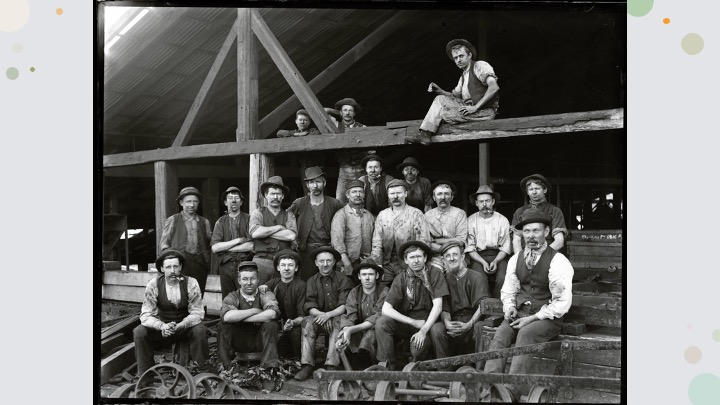






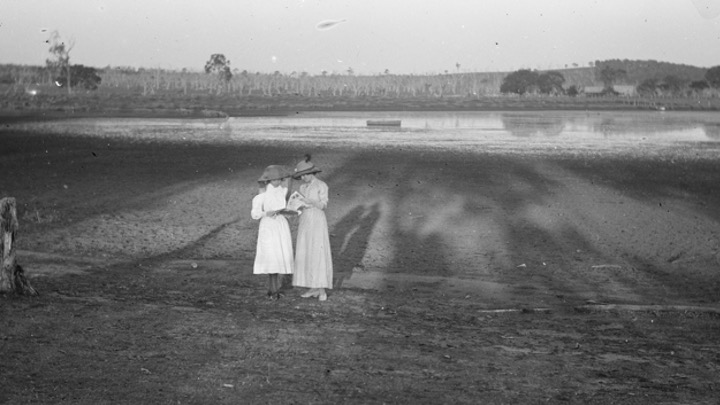











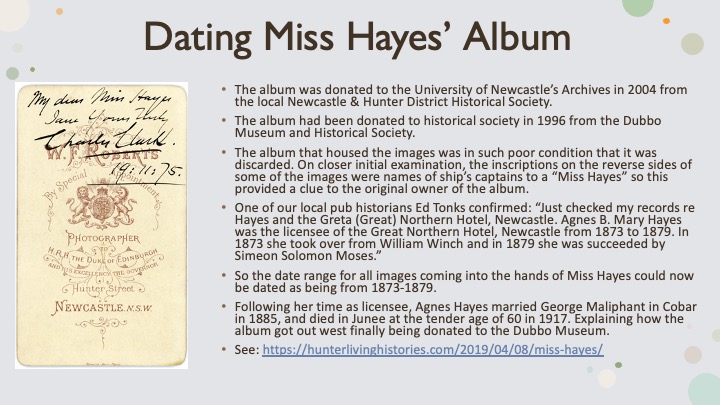










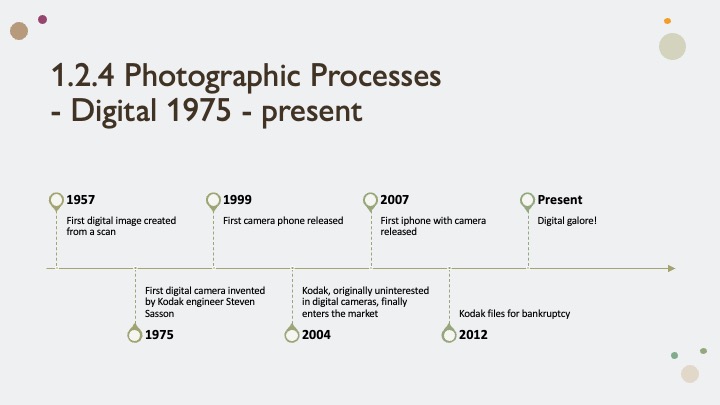




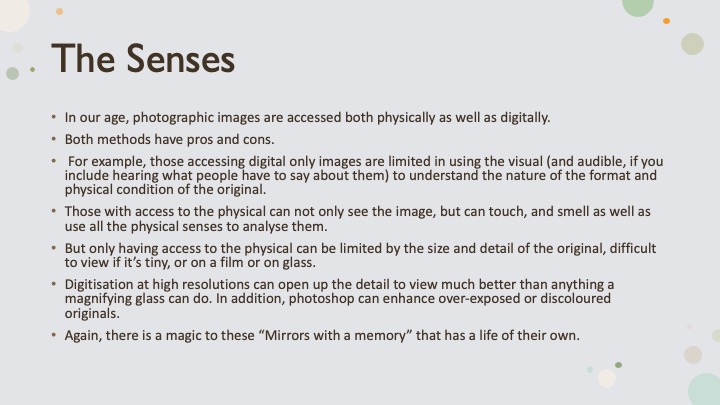



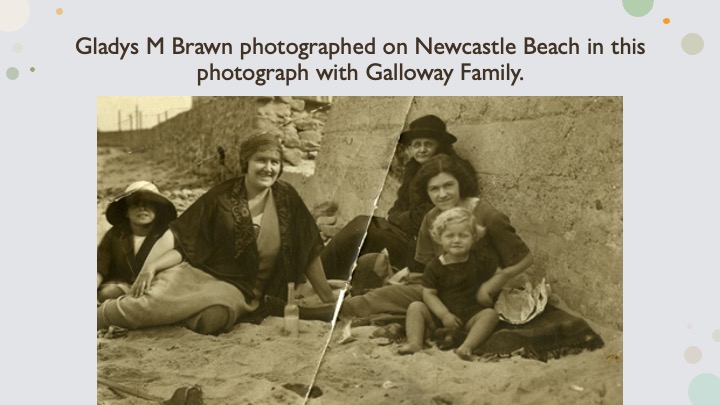
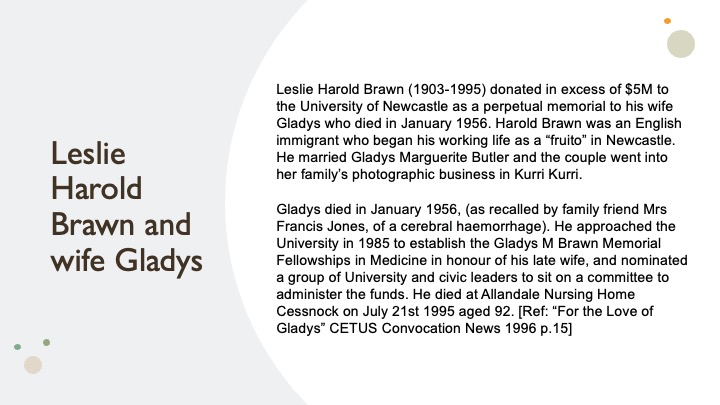




Thank you so much. So very interesting.